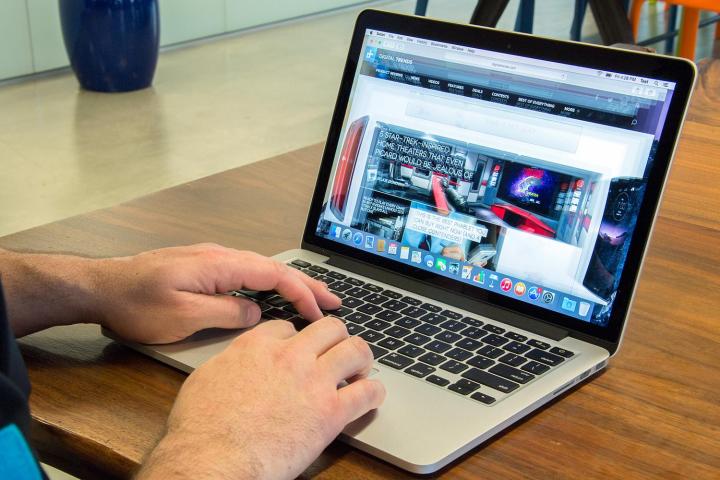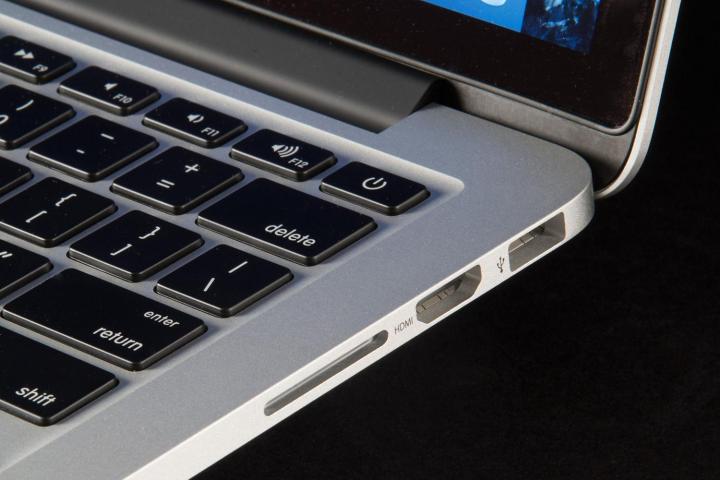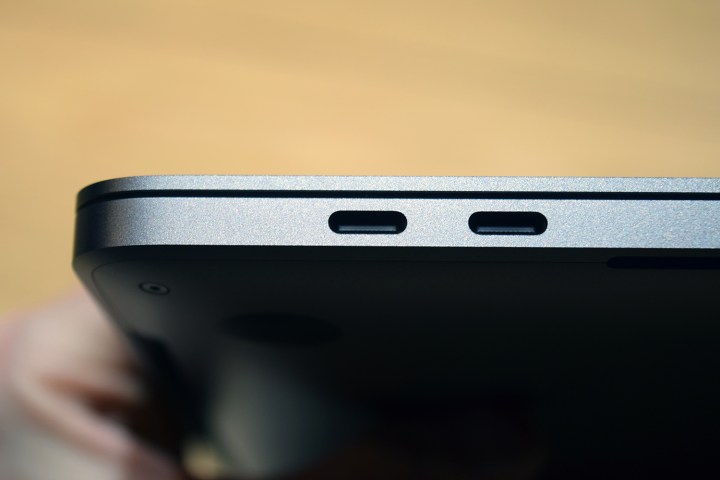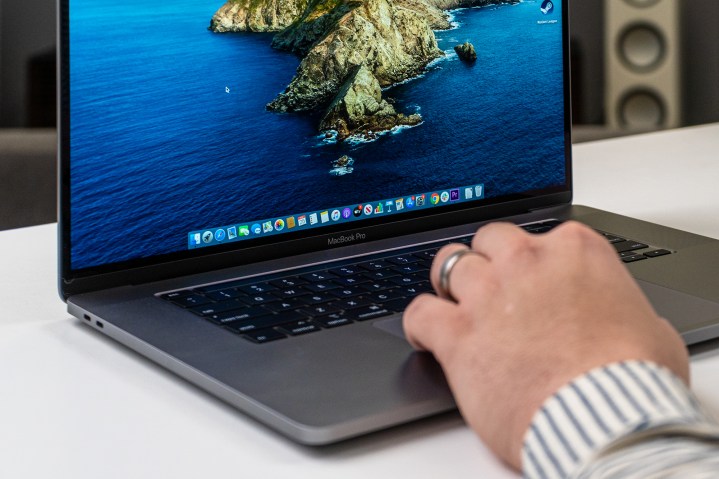Today marks the fifth anniversary of the 2015 MacBook Pro. In the five long years since then, Apple has struggled to replicate its success, bringing out a succession of laptops that excelled in some ways but were desperately flawed in others.
Only 2019’s MacBook Pro 16-inch has been universally liked, but it’s expensive and too large for most people. After so many years of hit-and-miss products, 2015’s model was the last truly excellent 13-inch MacBook Pro we ever got.
With the anniversary causing us to take a wistful glance back in time, we thought it’d be a good opportunity to reflect on what the 2015 MacBook Pro 13 did so well — and what future models can learn from it.
A laptop of lasts

They say you don’t know how good you’ve got it until it’s gone, and that’s perhaps nowhere clearer than with the 2015 MacBook Pro. It had a fantastic keyboard, a vibrant screen, plenty of ports, and a great trackpad, all coupled with Apple’s trademark build quality and impressive performance under the hood. It was the quintessential Apple laptop.
These weren’t revolutionary features at the time, but we loved them all the same. The keyboard was one of the most comfortable you could find on a laptop, offering plenty of travel and excellent backlighting. The Retina display was sharp, beautiful, and color-accurate and the trackpad was way ahead of its rivals, and these were deservedly considered major attractions for the MacBook Pro.

But most importantly, the 2015 MacBook Pro was a laptop of “lasts.” The last MacBook Pro to come with MagSafe, the popular magnetic power port. It was the last to come with ports like USB-A, HDMI, and a full-size SD card slot. It was the last to feature the Magic Keyboard until its glorious return late last year, and the last to come with physical Function keys.
It marked the jumping-off point before Apple left its comfort zone and headed into unknown territory with the 2016 MacBook Pro.
When Apple decides to move in a different direction, there are no half measures. It doesn’t creep and crawl towards the new horizon, it slams down on the pedal and floors it. Experienced Mac users will remember all too well the company’s jettisoning of floppy disks, Ethernet ports, and CD drives from days gone by.
In 2016, that feeling became all too familiar.
One step forward, two steps back

The problem with leaping headlong into the future? People get left behind. Most notably with the 2016 MacBook Pro, that was anyone who frequently used USB-A devices with their laptop.
Granted, people said the same thing when Apple ditched the floppy disk. And granted, Apple’s move dragged the computer industry kicking and screaming into the USB-C future. But a floppy disk drive can only accept one type of input. A USB-A port works with a massive range of different products, from mice to thumb drives to external storage, all of which would now need adapters. The inconvenience was massive, even if USB-C was more attractive on paper due to its reversible nature and support for super speedy Thunderbolt 3.
Even the iconic Apple logo on the lid had lost its glow.
It was more than just the ports, though. The redesign changed nearly everything that was familiar about the older design. There was a new Force Touch trackpad and the entire Function row was replaced by the Touch Bar. Even the iconic Apple logo on the lid had lost its glow.
The most noticeable changes in the 2016 model — the Touch Bar and new keyboard — felt jarring and wildly different from what came before. The Touch Bar was fine, but still hasn’t found that one killer use or fully convinced us of its utility. The butterfly keyboard, meanwhile, drew sharp criticism, with shallow travel and a nasty tendency towards sticky keys. The changes only served to highlight what had been sacrificed from the 2015 model.

The butterfly-switch keyboard would end up being the one detrimental mistake that Apple couldn’t take back. Something every MacBook user had taken for granted — a keyboard that’s quiet, long-lasting, and comfortable to use — no longer existed in the world of the MacBook Pro. Apple tried time and again to tweak and tune the butterfly keyboard to no avail; the keys may have been larger and more stable, but they were nowhere near as dependable.
This strikes at the core of what made the 2015 MacBook Pro so great: All its features felt right, whether they were brand new or refinements of past inclusions. It was the first MacBook Pro to come with a Force Touch trackpad, for example, yet this innovation felt natural and frictionless to use.
Combine that with the divisive, failure-prone butterfly keyboard and you have a recipe for disaster. During past transitions, Apple has eased the pain by giving people a device that may have lacked features they were used to but made up for it with new and exciting replacements or brilliant user experience.
With the 2016 MacBook Pro, we got neither.
The legacy of the 2015 MacBook Pro

Apple was never going to completely return to the 2015 MacBook Pro. It’s not a company that ever does a total about-face, and even small reversals in policy happen incredibly rarely. But when faced with the problems of the butterfly keyboard, the legacy of the 2015 version was inescapable: Apple had to bring back the Magic Keyboard.
Despite the name, the Magic Keyboard in the MacBook Pro 16 is not the same as that in the 2015 MacBook Pro. Instead, it’s more of an evolution that combines all that was great about the old-school Magic Keyboard with advances made in stability by the butterfly keyboard. In the end, it’s an extension of the 2015 keyboard’s legacy, brought up to date for a modern MacBook Pro.
We won’t have to wait much longer for another excellent 13-inch laptop from Apple.
We mentioned earlier that the MacBook Pro 16 is the first time Apple has managed to return to the heights of the 2015 MacBook Pro in the years since its debut. There’s hope, though, that we won’t have to wait much longer for another excellent 13-inch laptop from Apple.
Rumor has it Apple is planning a spring event where it will unveil a whole host of products, including a 13-inch version of the MacBook Pro 16 (or a replacement with a 14-inch screen). Like its larger sibling, it’s rumored to come with slimline bezels, the modernized Magic Keyboard, and a redesigned thermal architecture to allow for better performance. It’s exactly what we’ve been crying out for ever since the 16-inch model made its long-awaited debut.
After seeing the fanfare that greeted the MacBook Pro 16, Apple would be foolish not to bring its advancements to its smaller pro laptop. If that becomes a reality, it’d make 2020 an amazing year for Mac fans. The long wait for a successor to the 2015 MacBook Pro 13 could finally be over.
Editors' Recommendations
- These 6 tweaks take MacBooks from great to nearly perfect
- If you buy one MacBook Air alternative, make it this one
- The case for buying the M2 MacBook Air over the M3 model
- Which color MacBook should you buy? Here’s how to pick
- Why you should buy a MacBook Air instead of a MacBook Pro




